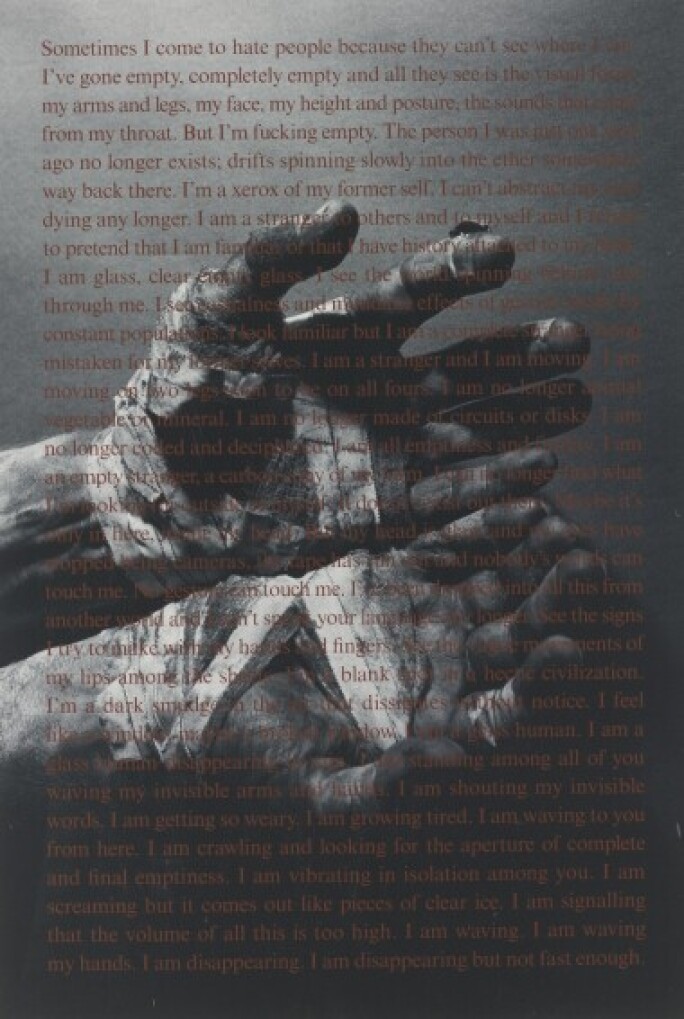“If I’m heading towards a rendezvous with death, then I want to experience it as real a state as it can get.”
Executed in 1991 shortly before the artist’s death, Untitled (Face in Dirt) is David Wojnarowicz’s last self-portrait. No lifetime prints exist as the artist was too weak from HIV/AIDS-related complications to fully realize this project. The entire edition of 10 gelatin silver prints was printed posthumously in 1992-93. Seven prints from the edition are in institutional collections, including The Museum of Modern Art, New York; the Denver Art Museum; the Harvard Art Museums, Cambridge; the Saint Louis Art Museum; the Boston Art Museum; and the Addison Gallery of American Art, Andover. The photograph offered here is one of only three prints still in private hands.
Photography permeated the work of David Wojnarowicz’s brief, potent career as a visual artist, but perhaps most significantly in the final years of his life. In 1987, artist Peter Hujar– Wojnarowicz’s lover and mentor–died from complications with AIDS in the New York loft the couple shared. Shortly after, in the spring of 1988, Wojnarowicz himself was diagnosed with HIV, and his art became infused with rage at the American non-response to the epidemic.
Made in May 1991, Untitled (Face in Dirt) is the actualization of an image Wojnarowicz first visualized more than a decade earlier. A lifelong diarist, he recorded the following dream in his 11 December 1979 entry: “They’ve buried me in the coarse brown earth, all the way up to my teeth; somehow the mouth must be opened wide so that fillings of dirt spread within the jaw, over the white porcelain teeth, leaving one tooth exposed down to the gum.”
This image was made when Wojnarowicz trekked west in the company of artist Marion Scemama to explore the deserts of California, Arizona, and Chaco Canyon, New Mexico. As pre-visualized in his dream, Wojnarowicz’s face simultaneously emerges from and submerges into the rubble. In the black-and white image, the tonality of his skin and the dramatic shadows around his nostrils and chin so closely resembles the dirt and rocks; he appears to fade into the environment with his white teeth as an exception–gleaming remains among the settled debris from a disaster.
This image has since become one of Wojnarowicz’s signature images, reproduced in numerous publications and widely exhibited. It remains one of the most poignant photographs from the AIDS epidemic, poetically depicting tragedy, frustration, and mortality in a single frame.


